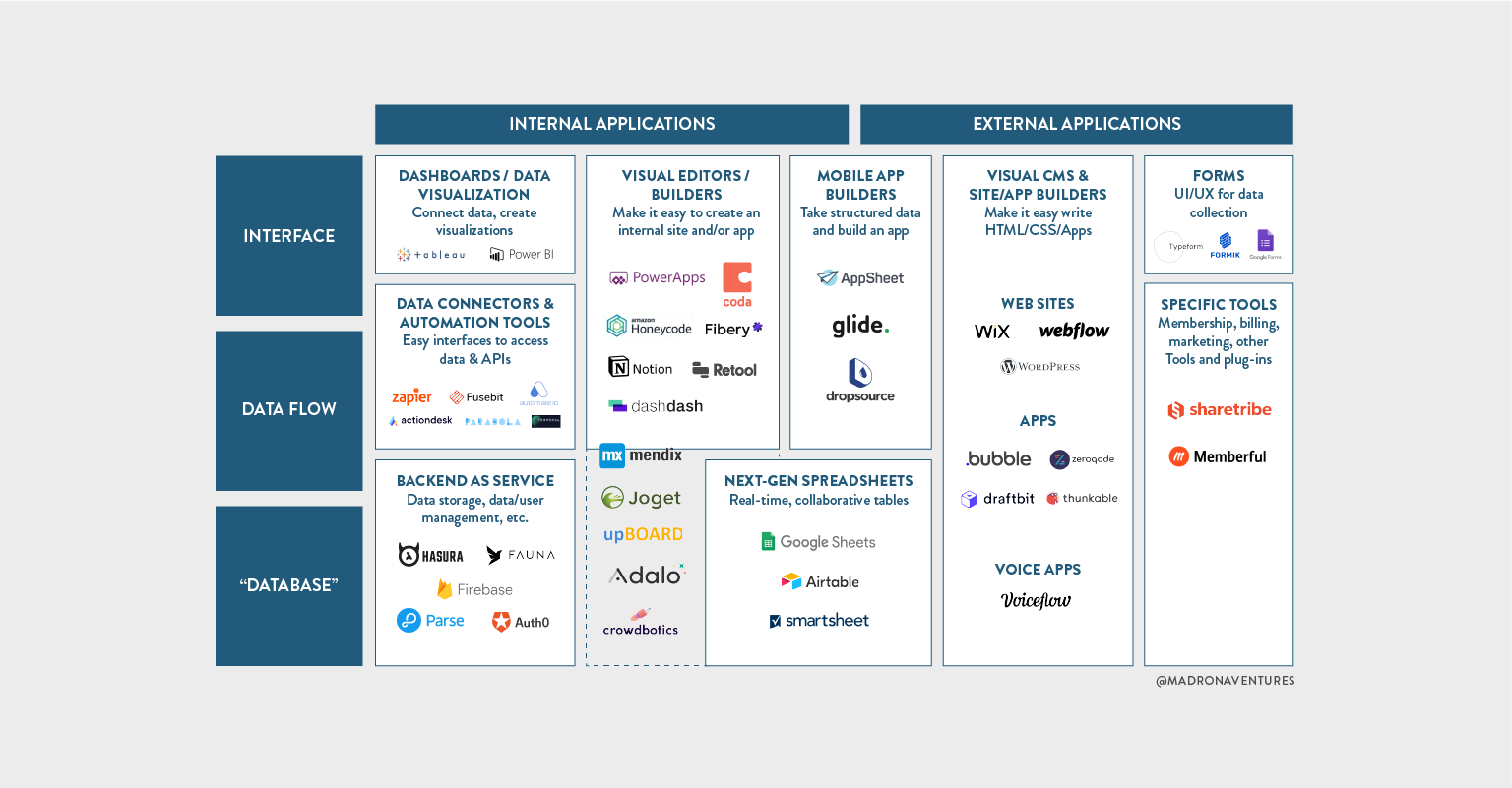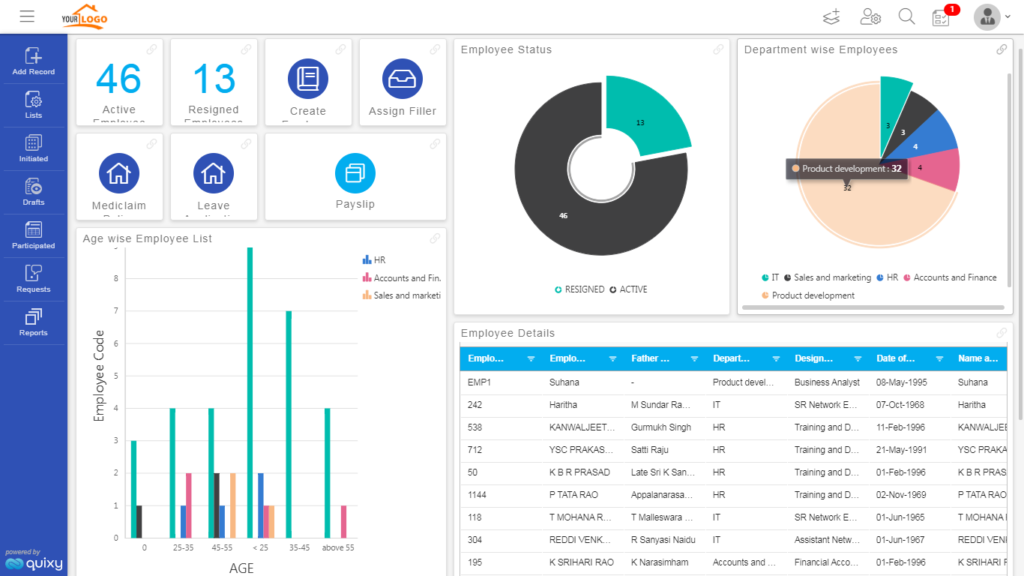No-Code Platforms for Open System Database Creation: Conserve Time and Resources
Discover How Scalable Data Sources Can Be Utilized Without Coding to Improve Your Organization Operations
In today's hectic service environment, the capability to take care of and evaluate data effectively is paramount. no-code. Scalable databases, particularly when combined with no-code remedies, supply a transformative strategy that equips non-technical users to simplify operations.
Understanding Scalable Databases
Scalable data sources are crucial for modern service procedures, allowing organizations to efficiently handle raising quantities of data without compromising efficiency. These data sources are developed to adjust and grow to the altering needs of a business, guaranteeing that they can take care of bigger datasets and more complex queries as organizational requirements progress.
Understanding scalable databases involves recognizing their 2 primary types: vertical scaling and horizontal scaling. Upright scaling, or "scaling up," involves including even more power (CPU, RAM) to an existing web server to boost performance. Conversely, horizontal scaling, or "scaling out," entails adding much more servers to distribute the tons, which often results in better adaptability and mistake resistance.
An additional critical aspect is the architecture of scalable databases, which can be either relational or non-relational. Relational databases, such as MySQL and PostgreSQL, are structured and use SQL for inquiries, while non-relational databases, like MongoDB and Cassandra, provide more flexibility with unstructured data.
Inevitably, comprehending scalable data sources is crucial for services aiming to utilize information as a tactical asset, allowing them to stay competitive in a progressively data-driven atmosphere.

Advantages of No-Code Solutions
Opening the possibility of no-code options empowers companies to improve procedures and improve performance without the demand for substantial shows knowledge. These platforms permit non-technical users to create, customize, and take care of databases effortlessly, therefore equalizing access to modern technology across teams.
One of the key benefits of no-code services is their speed of execution. Businesses can rapidly deploy applications and automate processes, dramatically reducing the time invested in development cycles. This agility enables organizations to respond immediately to market adjustments and consumer demands, promoting an one-upmanship.
Furthermore, no-code platforms decrease reliance on IT departments for everyday tasks, allowing technological groups to concentrate on even more complex projects that require specialized skills. This change not just maximizes resource appropriation yet additionally advertises technology within the company.
Cost-effectiveness is an additional benefit, as no-code solutions can decrease growth and upkeep costs. By lessening the demand for coding expertise, companies can harness the capacities of their existing labor force without the expenses of employing extra employees.
Popular No-Code Database Devices
The surge of no-code remedies has actually caused the introduction of numerous database devices that satisfy services seeking efficiency and access. These devices equip users with restricted technical proficiency to produce, take care of, and control databases effortlessly.

Caspio sticks out for its capacity to develop internet applications without any type of coding. It permits companies to develop durable databases and deploy applications swiftly, accommodating numerous market demands. Propensity provides straightforward interfaces and powerful data management capacities, enabling companies to construct personalized applications tailored to their workflows.

Usage Situations in Service Workflow
Exactly how can organizations leverage database devices to boost their operations? Scalable databases supply organizations with effective abilities to manage and assess data without the demand for substantial coding knowledge. These tools can simplify various service procedures, eventually bring about boosted efficiency and performance.
One famous usage case is client connection monitoring (CRM) Services can use scalable databases to track customer interactions, preferences, and responses, enabling personalized communication and much better solution. By streamlining this details, teams can team up extra effectively and respond to customer needs in real-time.
An additional substantial application is stock monitoring. Companies can utilize no-code database tools to monitor supply levels, track shipments, and projection need. This makes sure optimal supply degrees, minimizes waste, and lessens stockouts.
In addition, task administration can gain from scalable data sources by permitting teams to manage tasks, target dates, and sources in a combined platform. With real-time updates and information visualization, task managers can make enlightened decisions.
Starting With Execution
Executing scalable databases in company operations requires an organized approach to guarantee successful combination and application. The first step is to conduct a detailed needs evaluation, determining certain organization requirements, data types, and expected development patterns. This foundational understanding will assist the choice of the appropriate Recommended Reading database remedy.
Following, choose an easy to use, no-code database system that aligns with your operational goals. no-code. Lots of contemporary solutions offer instinctive interfaces, enabling non-technical users to take care of data efficiently. After selecting a system, develop a clear information architecture that lays out just how data will certainly be arranged, accessed, and preserved
Training is critical; make sure that staff member are outfitted with the needed skills to use the data source. Think about giving workshops or tutorials to acquaint team with the system's capabilities.
Final Thought
In conclusion, the assimilation of scalable data sources through no-code services offers considerable advantages for service procedures. These platforms empower non-technical customers to efficiently click to read handle and analyze data, promoting enhanced decision-making and partnership. By adopting devices such as Airtable and Idea, companies can decrease and enhance procedures dependence on IT sources. Inevitably, leveraging these technologies can his comment is here result in improved productivity and operational performance, placing businesses for continual growth in a competitive landscape.
One prominent no-code database device is Airtable, which integrates the capability of a spreadsheet with the power of a database.How can organizations leverage data source devices to improve their operations? Companies can make use of scalable data sources to track consumer interactions, preferences, and feedback, enabling tailored interaction and better service.Carrying out scalable data sources in service procedures needs an organized strategy to ensure effective integration and application.In conclusion, the integration of scalable data sources via no-code solutions provides significant benefits for business operations.